Competitive to the core
This new superyacht combines luxury innovations with energy-efficient construction, enabled by a new marine-grade balsa core.
The world of superyachts is certainly about extreme luxury. Yacht buyers today demand innovative design features that maximize their onboard aesthetic experience and comfort, and they want the latest operational technology and cutting-edge marine performance, as well. Renowned for its accomplishments in this arena, Lazzara Yachts (Tampa, Fla.) has collected numerous awards for its superyacht designs: Notably, the Lazzara LSX Quad 75 was named Most Innovative in its class by Yachts International magazine, at the 2007 Cannes International Yacht Show, and the Lazzara 84 won the 2006 Cannes Best Overall Yacht award.
The company also produces 68-ft/20.7m and 116-ft/35.4m models, and introduced at this year’s Fort Lauderdale International Boat Show the LSX 92, featuring a new design that, boating observers say, has truly revolutionized yacht design in its size range. For luxury yacht customers accustomed to open floor plans in their homes, the LSX 92 delivers the same open environment in a luxury yacht, including a unique main deck atrium with retractable sunroof and fold-down, sea-level side balconies. Its A-list appointments are complemented by high-end performance with a definite lean toward green, courtesy of a radically more fuel-efficient Volvo IPS Quad engine system and a composite construction that reduces thermal loss and maximizes insulation, similar to the performance delivered with Energy Star-rated home construction and appliances.
However, Lazzara Yachts not only has to exceed its customers’ expectations and present something dramatically different in the marketplace, it also must compete successfully against multiple superyacht manufacturers, especially those in Europe, whose styling and size range most closely rival its own models. Further, Lazarra Yachts has a longstanding commitment to using balsa core while its European competitors frequently use foam core construction, claiming that balsa core is susceptible to rot in marine environments and, therefore, is an inferior construction material. As cofounder and co-owner of Lazzara Yachts with his brother Brad, Dick Lazzara refutes these claims and has played an important part in extensive development of balsa and advanced composite construction technology in the marine industry.
The Lazzara brothers are part of a boatbuilding dynasty that stretches back more than 50 years and three generations, including father Vince Lazzara, and industry-revolutionizing brands like Columbia Yachts, SeaRover, and Gulfstar. “We were one of the first companies to core the entire boat above and below the waterline,” Lazzara maintains. “We do use foam core and honeycomb core, depending upon the structure and its requirements, but balsa core offers a production-friendly material and a reliability in that consistent, high-quality construction can be repeated time and time again.” Most important, says Lazzara, is his boatbuilding company’s public record of success: “We have been building vacuum-bagged balsa-cored boats for over 30 years and have never had a catastrophic failure,” he claims. “We want the lightest, strongest, best-quality core material for production because it makes it easier to build the innovative boats we are known for.”
Bettering basic balsa
Lazzara credits much of what was achieved in the new LSX 92 to balsa core improvements developed by I-Core Composites (Cullman, Ala.). I-Core was formed in 2004 by David Lee and Keith Walton — the latter, one of the industry’s leading sandwich core experts, who had worked with Northvale, N.J.-based Baltek Corp. from 1978 until Baltek’s acquisition in 2003 by Alcan (Montreal, Quebec, Canada). I-Core began selling end-grain balsa structural core produced at its Cullman, Ala. plant in April 2006, debuting its trademarked EG Balsa Lite, Grade and Ultra product lines. According to Lazzara, “Balsa had been the same for 30 years, but now I-Core has reinvented it. Keith Walton has been able to develop a production process that creates a new standard for balsa core: Lighter, more stable and completely rot-resistant. From a manufacturer’s standpoint, it makes the outcome, the final end-product, much greater.”Keith Walton explains that I-Core was born out of his passion for composites, especially for developing new products to solve customer problems. Walton understood Lazzara Yachts’ composite core and production needs and believed I-Core had a solution with its new trademarked line of EG Balsa Armor Products, which features a proprietary coating that, I-Core claims, minimizes resin absorption, maximizes the adhesive bond between core and laminate skins, and contains a rot-resistant biocide. Traditionally, balsa core suppliers have had to educate customers about the threat of moisture ingression, emphasizing that every fiber in the laminate must be completely encapsulated with resin to protect the core. “We wanted to go further than simply saying ‘it’s encapsulated,’” says I-Core marketing manager Mark Walton. “We have found that during the life of a composite yacht or other structure, things happen that ideally shouldn’t. There is damage and/or neglect, or through-core penetrations are made to structures during later modifications.” Because any of these events can allow water to come into contact with the balsa core, I-Core committed to its coating technology.
Moreover, Walton intended to offer foam and other core materials in the future, and most foams cannot be cut with saws because friction melts the foam, which builds up on the blade. “We’ve gone through multiple generations of knife blades within two years, which has been very expensive,” he notes, “but we have figured out how to cut all of our core materials with precision.” The machine not only slits foam or balsa but also perforates the panels in a one-step process that helps I-Core meet both performance and cost goals.
Another issue was the scrim. Ideally, Walton would eliminate it altogether because in sandwich construction the goal is to expose the most balsa surface possible to optimize its mechanical bond with the skin laminate. The practical compromise is to use the lightest scrim material that will still hold the small balsa blocks together. Walton chose not to use the typical water-based glue in his scrim but instead turned to a self-adhesive thermoplastic scrim that exposes 80 percent of the balsa panel surface, a significantly greater area than typical balsa scrims. Walton admits this was risky, noting that the machinery must heat the thermoplastic to a specific temperature, pass the balsa and scrim through a set of rollers to adhere them, then cool the thermoplastic, all within a precisely calculated time frame. Walton reports that in-house and field tests showed no laminate bond-strength difference between the scrim side of the panel and the non-scrim side, and no air entrapment on the scrim side. “These may seem like small details,” says Walton, “but they make a lot of difference to the customer/builder in terms of bond strength and end-use performance.”
Re-inventing the sports yacht
The LSX 92 is the latest Lazzara beneficiary of I-Core’s balsa technology. “I was really excited to see a totally new way of manufacturing balsa,” Lazzara recalls, “Keith Walton and I had worked together on many pioneering prototypes that we then transferred into production, so I had confidence we could do this again.” Lazzara had wanted to do something different with the LSX 92. In Europe, express boats (boats constructed with a large open area between the cockpit and helm station) had become very popular. “We wanted to develop an express-style yacht which went one step further,” says Dick Lazzara. The LSX 92 features a vacuum-bagged, carbon fiber-reinforced, balsa-cored roll cage, which stiffens the deck, enabling a very open yacht interior. There are, in fact, no bulkheads on the main level, and the part of the main deck that, with conventional construction, would be enclosed has been opened up to form a luxurious atrium, allowing passengers to more fully enjoy the at-sea environment. What would have been the flybridge (an open deck above a yacht’s main bridge that is typically equipped with a duplicate helm station), has instead been incorporated into the ultralightweight carbon-reinforced top deck, resulting in an innovative, one-piece structure that also features a retractable sunroof — think cruising the Amalfi Coast in a leather-appointed Italian sports car. Each new feature was made possible, according to Lazzara, by the stiffness and stability of I-Core’s balsa core.
I-Core’s EG Balsa Armor is used in the ultralight carbon-reinforced top deck, which was resin infused using AME 4000 vinyl ester resin, supplied by Ashland Performance Materials, a division of Ashland Inc. (Dublin, Ohio), and also in the vacuum-bagged, carbon fiber-encased, balsa-cored roll cage made with vinyl ester resin supplied by AOC (Collierville, Tenn.). For this structure, Lazzara Yachts worked with Vectorply (Phenix City, Ala.) to develop a new 11-oz/yd² (374-g/m²) carbon fiber fabric, VEC CLTI 1105W Micromesh Biaxial, to use with I-Core’s new lightweight 7-lb/ft³ (112-kg/m³) EG Balsa Lite core. (The same fabric also is used in the lightweight top deck.)
Balsa reduces transmission of engine and hull noise and supports Lazzara’s lightweighting strategy, an important goal because the Volvo Improved Propulsion System (IPS) Quad engines formed the first four-engine installation on a yacht of this size. Volvo’s IPS mates a state-of-the-art inboard diesel with a pod drive that protrudes through the bottom of the hull, eliminating propeller shafts, struts and rudder. Twin counter-rotating propellers on a drive leg face forward instead of aft, enabling the steering system to change yacht direction by articulating the drive units. The result is significantly better handling at all speeds, an improvement in fuel economy of 30 to 40 percent, and a nearly doubled cruising range.
The LSX 92 interior is a 100 percent balsa-cored monocoque, including built-in beds, nightstands, dressers, as well as innovative furniture and storage, which is manufactured in parallel with the yacht hull and stringer system, and then set inside. This design results not only in a very lightweight and sturdy interior, but also aids in speeding production to meet customer timelines. Here, I-Core’s balsa supported another “green” goal, the prevention of thermal loss. Discovered during Lazzara Yachts’ extended product and quality testing, the 20 percent reduction in heat transfer significantly reduces the yacht owner’s heating and air-conditioning costs.
Modular construction is a trend in the yacht industry that Lazzara Yachts has employed from its beginnings. Long before Boeing and U.S. automakers adopted the practice, Lazzara Yachts designed, specified and, early on, subcontracted much of its yacht construction as modules, and then inspected them for quality before completing final yacht assembly at its Tampa facilities. Ironically, Lazzara has moved away from outsourcing modules to increase efficiency. “We wanted to use robotics and more automated assembly,” says Lazzara. To implement these strategies, the company either purchased its subcontractors or formed its own production divisions so that it could automate as required to meet production goals.
Qualifying to be onboard
According to Dick Lazzara, when he and Keith Walton first worked together in the late 1970s, there was no standard testing for core materials: “Keith and I developed basic test standards so that we could define the products we needed and were using.” He also emphasizes that any product used in Lazzara Yachts has to prove its value. Accordingly, the company put I-Core’s balsa core through a stringent one-year qualification regime that included resin transfer tests to see how the core reacts and infuses, as well as more traditional tests, such as ASTM D-790 flex tests and ASTM D-1781 climbing drum peel tests to evaluate adhesion of faceskins to core. It also performed thermal transfer tests and saltwater-immersion tests to analyze core permeability and stability. After successfully meeting the qualification requirements, I-Core’s balsa core was incorporated slowly into Lazzara Yachts construction, starting with stringers (an application pioneered by Keith Walton and Dick Lazzara more than 25 years ago). Today, Lazzara’s balsa-cored stringers are CNC-machined and capped with 34-oz/yd² (1153-g/m²) fiberglass triaxial fabric supplied by the OCV Technical Fabrics division of Owens Corning Composite Materials, (Toledo, Ohio, formerly St. Gobain-BTI, Brunswick, Maine). After it was qualified for stringers, I-Core’s EG Balsa Armor progressed into contourable, cut core products for hulls and decks, followed by structural bulkheads and, finally, into monocoque interiors like that on the LSX 92. I-Core balsa is now used in every Lazzara Yachts model, and the two companies continue to work together, most recently to develop veneered balsa-cored panels for interior yacht structures, such as cabinetry, finished bulkheads and built-in furniture.
Beyond balsa
Lazzara Yachts unveiled the LSX 92
with a dramatic flourish (see sidebar, below) and will no doubt follow
it up, in collaboration with I-Core, by introducing more innovative
balsa-cored models in the future. With the introduction of its Corrite
Structural Foam core at the 2007 International Boatbuilders Exhibition
(IBEX), however, I-Core moved away from exclusive focus on balsa and is
now pursuing its goal to become a full-range core materials supplier,
with honeycomb and other core alternatives in the works.Related Content
CW Tech Days webinar addresses emerging composites opportunities in infrastructure, construction
Attend this Dec. 1st interactive webinar sponsored by Composites One, where experts will review and evaluate the composite materials, processes and applications that should and will be considered for use in these markets.
Read MoreMaterials & Processes: Composites fibers and resins
Compared to legacy materials like steel, aluminum, iron and titanium, composites are still coming of age, and only just now are being better understood by design and manufacturing engineers. However, composites’ physical properties — combined with unbeatable light weight — make them undeniably attractive.
Read MoreMaterials & Processes: Fibers for composites
The structural properties of composite materials are derived primarily from the fiber reinforcement. Fiber types, their manufacture, their uses and the end-market applications in which they find most use are described.
Read MoreComposites end markets: Infrastructure and construction (2024)
Composites are increasingly used in applications like building facades, bridges, utility poles, wastewater treatment pipes, repair solutions and more.
Read MoreRead Next
Composites end markets: Energy (2024)
Composites are used widely in oil/gas, wind and other renewable energy applications. Despite market challenges, growth potential and innovation for composites continue.
Read MoreCW’s 2024 Top Shops survey offers new approach to benchmarking
Respondents that complete the survey by April 30, 2024, have the chance to be recognized as an honoree.
Read MoreFrom the CW Archives: The tale of the thermoplastic cryotank
In 2006, guest columnist Bob Hartunian related the story of his efforts two decades prior, while at McDonnell Douglas, to develop a thermoplastic composite crytank for hydrogen storage. He learned a lot of lessons.
Read More




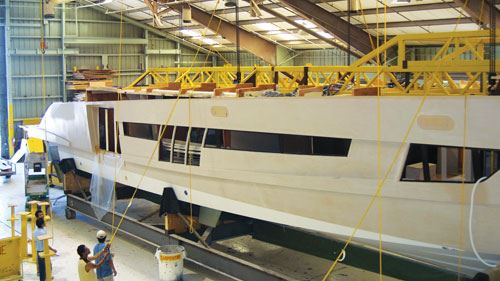
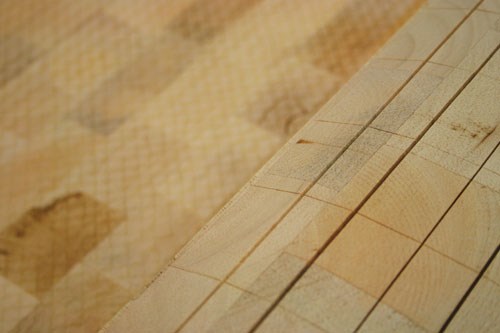
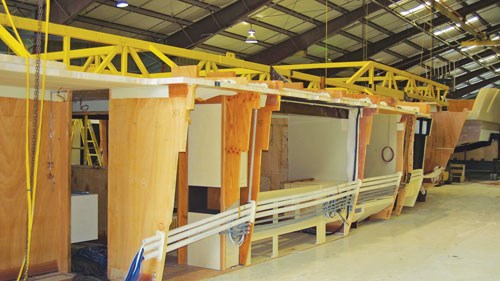
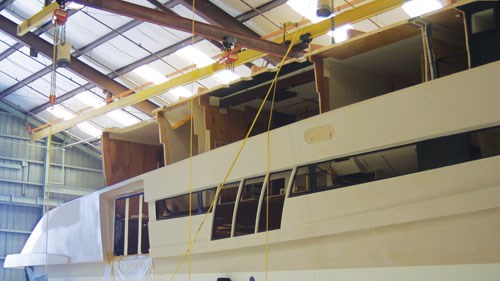

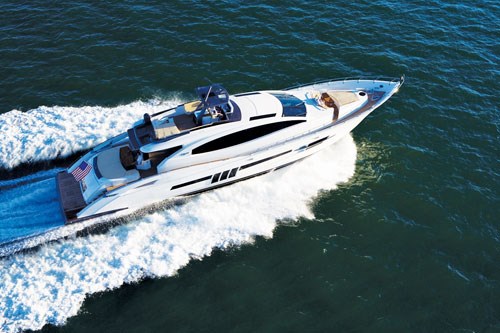












.jpg;maxWidth=300;quality=90)














